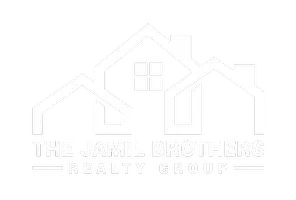Harris Teeter Closing 3 Northern Virginia Stores — What This Means for Local Neighborhoods
It’s never easy when a neighborhood grocery store closes. Recently, Kroger (parent company of Harris Teeter) announced that Harris Teeter will close three stores in Northern Virginia.
For the people who live nearby, this move brings both challenges and opportunities.
In this article, we’ll explore which stores are closing, why this is happening, how local communities will feel the impact, and what neighbors can do to adapt. Let’s walk through this together—because a stronger neighborhood is built when we face change with open eyes.

Calculate Your Savings with 1.5% Listing
Get a free net proceeds estimate tailored to your area.
See how our 1.5% full-service listing program can help you keep more equity.
Free Net Proceeds CalculatorWhich Harris Teeter Stores Are Closing, and When
According to local reporting:
- The Tysons location at 8200 Crestwood Heights Drive will close July 20, 2025.
- The Arlington store at 950 S. George Mason Drive also is slated to close on or before July 20.
- The Arlington store at 3600 S. Glebe Road is expected to shut by August 4, 2025.
Harris Teeter says these closings come after a strategic market review and are part of Kroger’s broader plan to shutter underperforming outlets.
The company has stated that employees at these locations will be offered transfers to other Harris Teeter stores.
Why This is Happening: The Bigger Picture
Here are some of the reasons behind these closures, and what they suggest about the grocery business today:
- Market Optimization
Harris Teeter (via Kroger) is looking to streamline operations, close stores that aren’t meeting financial targets, and reinvest in more profitable locations. - Shifting Consumer Behavior
Online grocery ordering, competition from discount chains, and evolving shopping preferences are putting pressure on mid-level supermarkets. - Competition & Saturation
In areas like Tysons, Arlington, and surrounding neighborhoods, there are already many grocery options: Lidl, Whole Foods, Walmart, and more. Losing one location means residents may shift among those options. - Financial Pressures on Chains
Kroger has announced plans to close around 60 stores nationwide in coming years. Some reporting mentions a 50% off “final clearance” at affected stores.
This isn’t just about these three stores—it's part of a broader shift in how grocers operate in competitive, cost-sensitive markets.
Local Neighborhood Impact: What Residents Will Feel
Having a grocery store close touches daily life. Here’s what communities near these stores may experience:
- Longer Shopping Trips
Residents who walked or drove a few blocks to Harris Teeter may now face 10–20 minute drives for comparable quality or selections. That overhead adds time, cost, and inconvenience. - Supply Pressure on Nearby Stores
Neighboring grocery stores may see more foot traffic and demand—which can strain inventory or lead to higher prices in the short run. - Loss of a Local Hub
Grocery stores often serve more than shopping—a community gathering point, pharmacy access, pickup point for neighbors. Losing one means rebuilding local connection elsewhere. - Real Estate Perceptions
Homebuyers pay attention to amenities. Losing a nearby grocery can affect property attractiveness—although some neighborhoods may absorb the change quickly if other stores are nearby. - Job Displacement & Employee Stress
Employees at the closing stores may have to transfer or search for new jobs. While Harris Teeter offers transfers, commuting, scheduling, and fit may change.
What You Can Do as a Neighbor
Here are steps residents and local leaders can take to adapt:
- Advocate for new grocers—approach local councils or real estate developers to encourage replacement grocery anchors.
- Support smaller local markets—patronize independent or specialty grocers to help keep options viable.
- Coordinate community purchasing or delivery options for neighbors who have further to travel.
- Monitor transit / traffic changes—store closures shift parking and traffic patterns; engagement helps safe planning.
- Communicate with Harris Teeter—sometimes, closure decisions can be delayed or modified if community pushback is strong.
The Bottom Line
The true cost of selling your Dumfries home depends on one thing: how informed you are. Yes, there are fees, commissions, and closing costs—but every smart decision adds up to more money in your pocket.
Choosing a 1.5% full-service agent is one of those smart decisions. It’s about keeping real value where it belongs—with you, the homeowner.
If you’re planning to sell in 2025, start by knowing your real numbers. Because when you understand your true costs, you control your true profits.
Sell confidently. Sell smart. And let your next move start from a position of strength—not surprise.
Key Takeaways:
- ✓ True cost depends on information
- ✓ Smart decisions add up
- ✓ 1.5% is a smart choice
- ✓ Sell confidently and smart
Thinking about Selling Your Dumfries Home?
Let’s connect. I’ll walk you through your home’s value, your savings with 1.5%, and exactly what your net proceeds will look like—so you can move forward with confidence using our 1.5% full-service listing program.
Call Today: (703) 375-9583
Learn More About Our 1.5% Listing ProgramFrequently Asked Questions (5)
Categories
Recent Posts










Let's Connect

